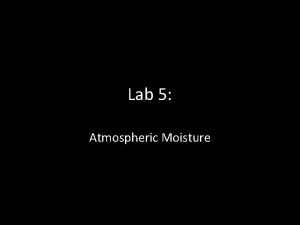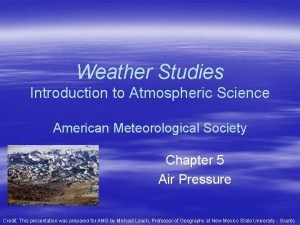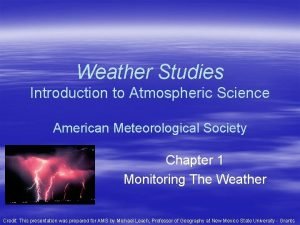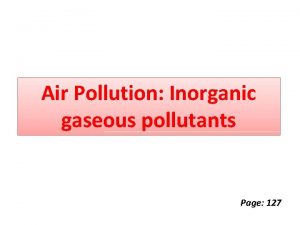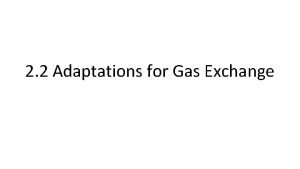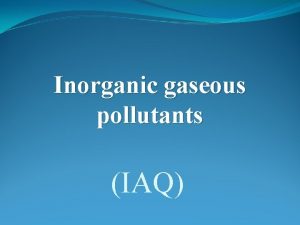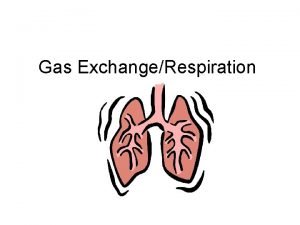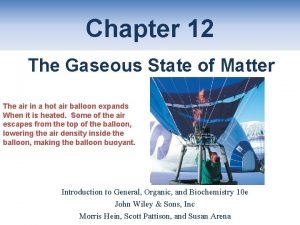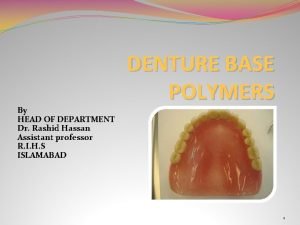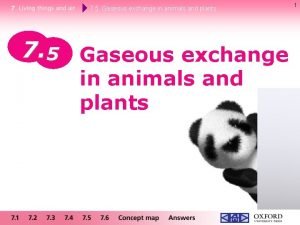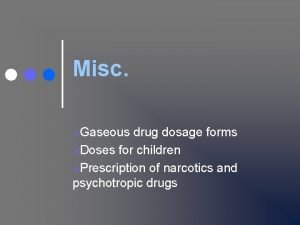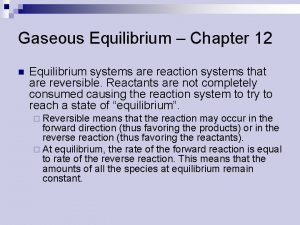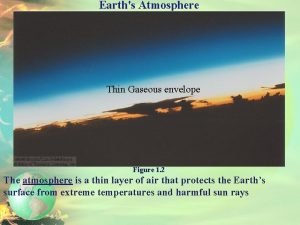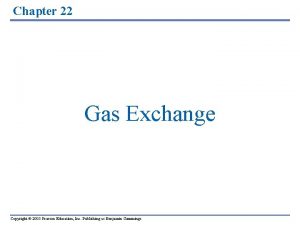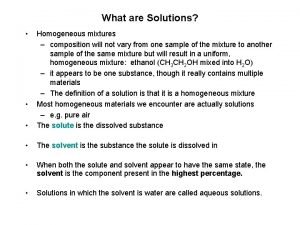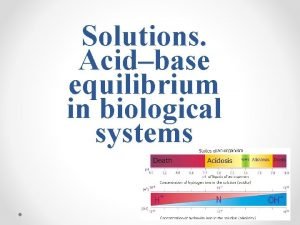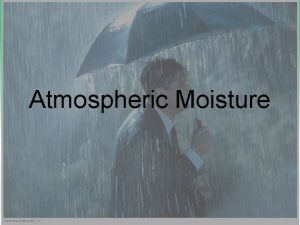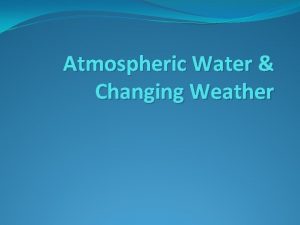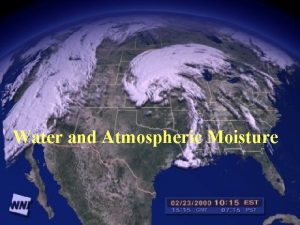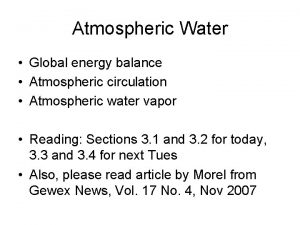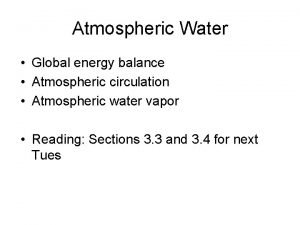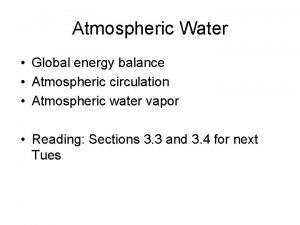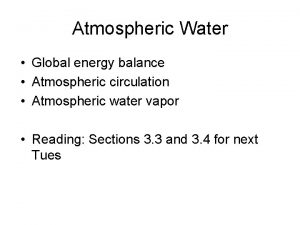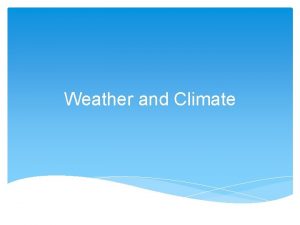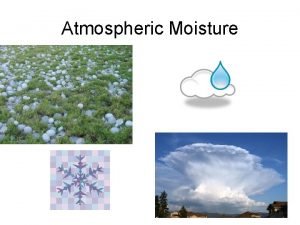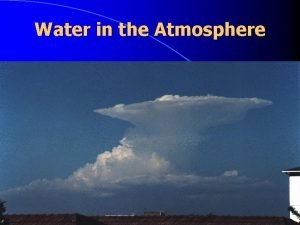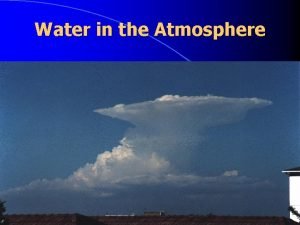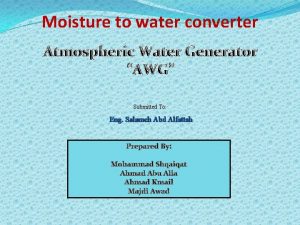Weather Lesson Four Moisture ATMOSPHERIC MOISTURE Gaseous water





















- Slides: 21

Weather Lesson Four Moisture

ATMOSPHERIC MOISTURE • Gaseous water is called WATER VAPOR. • Major source of atmospheric water vapor is the OCEANS (70%). • Sources include ØEVAPORATION – phase change where a liquid changes to a gas. ØTRANSPIRATION – process by which plants release water vapor as part of their life functions ØRESPIRATION – water vapor given off when organisms exhale (breathe out).

FACTORS AFFECTING EVAPORATION/TRANSPIRATION 1) TEMPERATURE As temperature INCREASES, evaporation ________. INCREASES Hot air can hold more water vapor.

FACTORS AFFECTING EVAPORATION/TRANSPIRATION 1) TEMPERATURE 2) MOISTURE As moisture in the air INCREASES, evaporation ________. DECREASES

FACTORS AFFECTING EVAPORATION/TRANSPIRATION 1) TEMPERATURE 2) MOISTURE 3) SURFACE AREA As surface area INCREASES, evaporation ________. INCREASES

From which container will the water evaporate the fastest?

RELATIVE HUMIDITY • Ratio of the water vapor in the air to the maximum amount of water vapor it can hold at a specific temperature. • The percent (%) saturation.

DETERMINING RELATIVE HUMIDITY Water Vapor Air Is Air Can Temperature Holding Hold Relative Humidity 20°C 1 mb 4 mb ¼ or 25% 15°C 1 mb 2 mb ½ or 50% 10°C 1 mb 1 or 100% 40°C 1 mb 10%

As temperature INCREASES, (keeping the water vapor content in the air constant), relative humidity __________. DECREASES As temperature DECREASES, (keeping the water vapor content in the air constant), relative humidity __________. INCREASES

Water Vapor Air Is Air Can Temperature Holding Hold Relative Humidity 20°C 1 mb 4 mb ¼ or 25% 15°C 1 mb 2 mb ½ or 50% 10°C 1 mb 1 or 100% Temperature to which air must be cooled to get 100% relative humidity. This is called the. . .

DEWPOINT TEMPERATURE • The temperature at which the air would be completely saturated with water. • As air cools to the dew point, relative humidity approaches 100%. • Any further drop in temperature will cause condensation.

PSYCHROMETER • A device used to indirectly measure dew point and relative humidity. • Contains a dry-bulb thermometer (regular) and a wet-bulb thermometer (a thermometer with a wick wrapped around its bulb and dipped into water). • Both are spun in the air and as water evaporates from the wet-bulb, it cools.


Determining Dew Point and Relative Humidity • The difference between the dry-bulb reading and the wet-bulb reading is the Wet Bulb Depression. • Using this information and a chart [Reference Tables], one can find both the dew point and relative humidity.







 Lab 5 atmospheric moisture
Lab 5 atmospheric moisture Water and water and water water
Water and water and water water What are weather variables
What are weather variables Weather studies introduction to atmospheric science
Weather studies introduction to atmospheric science Weather studies introduction to atmospheric science
Weather studies introduction to atmospheric science Weather forecast lesson 3 outline answers
Weather forecast lesson 3 outline answers My very excited mother just served us nachos
My very excited mother just served us nachos Inorganic gaseous pollutants of air
Inorganic gaseous pollutants of air Xeromorphic plants
Xeromorphic plants Inorganic gases
Inorganic gases Carbaminohemoglobin
Carbaminohemoglobin Gaseous state chapter
Gaseous state chapter Granular porosity denture
Granular porosity denture Gaseous exchange in animals
Gaseous exchange in animals Gaseous dosage form
Gaseous dosage form Gaseous equilibrium
Gaseous equilibrium Gaseous envelope of the sun
Gaseous envelope of the sun Life science grade 11 gaseous exchange practical
Life science grade 11 gaseous exchange practical Exchange of gases in earthworm
Exchange of gases in earthworm Gaseous solution
Gaseous solution Non gaseous alkalosis
Non gaseous alkalosis Example of liquid dosage form
Example of liquid dosage form
